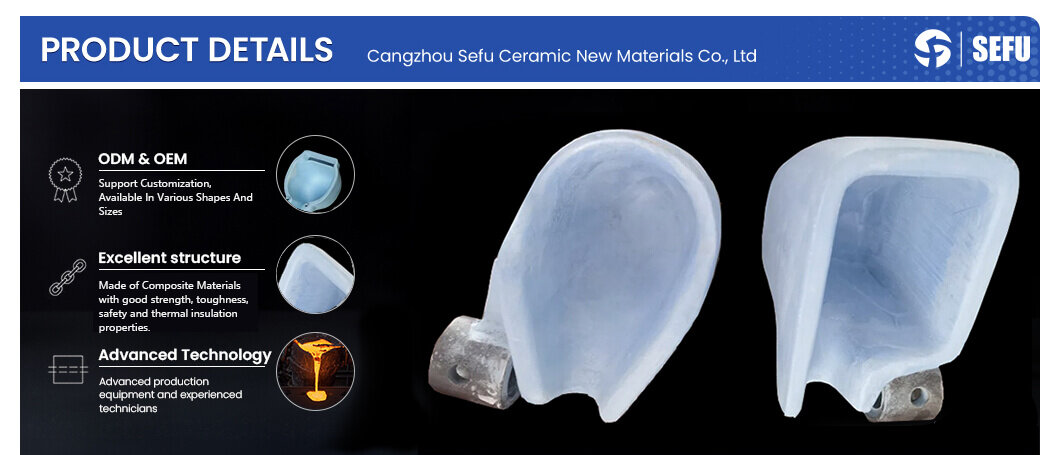Introduction
In the casting process of aluminum and aluminum alloys, the transfer of molten aluminum is a key link that affects production efficiency and casting quality. The traditional manual transfer method is not only inefficient, but also has risks such as high temperature burns and metal oxidation. The Auto Transfer Ladle for Molten Aluminum solves these problems through automation technology and becomes the core equipment of modern aluminum casting workshops. This article will introduce its working principle, technical advantages and industry applications in detail.
The core functions of the Auto Transfer Ladle for Molten Aluminum
The Auto Transfer Ladle for Molten Aluminum is an automated equipment specially used for precise material collection, transportation and pouring of molten aluminum. Its main functions include:
✔ Automatic material collection: quantitatively scoop aluminum liquid from the melting furnace or the holding furnace
✔ Stable transfer: reduce aluminum liquid shaking, avoid oxidation and air inhalation
✔ Accurate pouring: linked with the die casting machine/casting machine to realize unmanned production
Key technology analysis
(1) Lightweight high temperature resistant structure
- Ceramic fiber composite material lining:
Temperature resistance of more than 1200℃, 50% lighter than traditional refractory materials
Low thermal conductivity reduces aluminum liquid temperature loss (<5℃/min)
- BN reinforced coating: prevents aluminum liquid erosion and extends service life
(2) Intelligent control system
- Weight sensor: real-time monitoring of aluminum liquid weight, error control within ±1%
- Tilt servo motor: achieve 0.1° precision angle control to meet different mold requirements
- Internet of Things (IoT) interface: data docking MES system to achieve production traceability
(3) Safety protection design
- Splash-proof nozzle: special flow channel design reduces aluminum liquid splashing
- Emergency return function: automatic reset in case of sudden power outage to avoid aluminum liquid leakage
- Remote monitoring: operators do not need to approach high temperature working areas
Typical application scenarios
▶ Aluminum die casting (HPDC) workshop
- Matching the 800-1200 ton die casting machine beat to achieve 10-15 seconds/time fast pouring
- Case: After a certain auto parts factory adopted it, the yield rate increased by 6%
▶ Gravity casting of aluminum hubs
- Large capacity design (200-500kg) to meet the needs of hub castings
- Slow-fast-slow pouring curve reduces air entrainment defects
▶ Recycled aluminum smelting line
- Corrosion-resistant design adapts to the transfer of aluminum liquid containing impurities
- Cooperate with slag removal system to improve metal utilization
Comparative advantages with traditional methods
| Indicators | Manual transfer | Automatic pouring spoon transfer |
|---|---|---|
| Efficiency | 15-20 times/hour | 60-100 times/hour |
| Temperature loss | 8-12℃/min | 3-5℃/min |
| Safety | High risk | Fully enclosed operation |
| Consistency | Rely on worker experience | PLC precise control |
Industry development trends
- Modular design: Quickly replace pouring nozzles/linings to adapt to multi-variety production
- AI optimization: Machine learning algorithms automatically adjust pouring parameters
- Green manufacturing: Boron nitride (BN) coating reduces aluminum liquid adhesion loss
Conclusion
The automatic pouring spoon for aluminum liquid transfer is reshaping the production method of the aluminum casting industry through a combination of material innovation + intelligent control. For modern foundries that pursue high efficiency, high quality, and zero accidents, the application of this technology has changed from “optional” to “mandatory”. In the future, with the advancement of human-machine collaboration technology, its application scenarios will be further expanded.
Need a customized aluminum liquid automatic transfer solution? Please contact a professional equipment supplier to obtain a technical!
- Email: info@sf-foundry.com
- WhatsApp: +8613785803358



